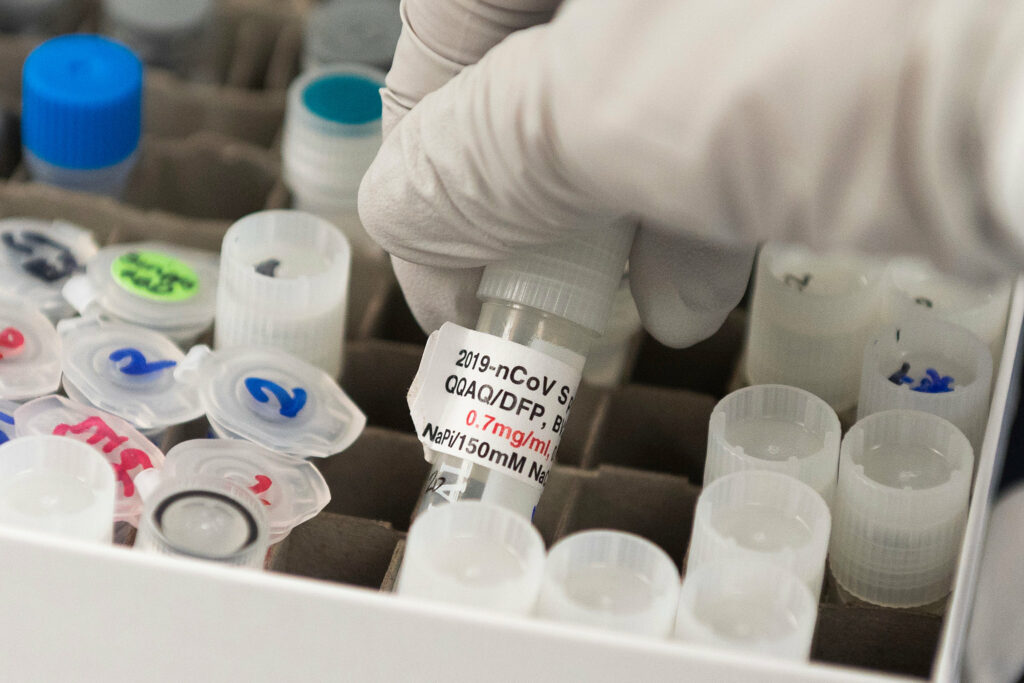More than 2.6 million people around the world have so far been infected with the coronavirus. As it expands, all hopes are on creating a vaccine, with trials currently taking place in different parts of the world.

In China, researchers at Sinovac Biotech, a private company based in Beijing, have successfully protected monkeys with a coronavirus vaccine. It’s the first time that a trial has worked on an animal and will now be followed by trials in humans.
The team gave two different doses of their COVID-19 vaccine to eight rhesus macaque monkeys. Three weeks later, the group introduced SARS-CoV-2, the virus that causes COVID-19, into the monkeys’ lungs but none developed a full-blown infection.
The monkeys that were given the highest dose of vaccine had the best response. A week after receiving the virus, researchers could not detect it in the pharynx or lungs of any of them. Some of the lower dosed animals had a “viral blip” but also appeared to have controlled the infection.
Despite the limited scale of trial — only a few monkeys were part of it, — Meng Weining, Sinovac’s senior director for overseas regulatory affairs, told Science Magazine that the results “give us a lot of confidence” that the vaccine will work in humans.
Florian Krammer, a virologist at the Icahn School of Medicine at Mount Sinai, also told the journal that the “old-school” nature of the vaccine — a formula of a chemically inactive version of the virus — means it could break down barriers to access.
“I like it,” Krammer said. “This is old school but it might work. What I like most is that many vaccine producers, also in lower–middle-income countries, could make such a vaccine.”
Nevertheless, the University of Pittsburgh researcher Douglas Reed, who is developing and testing COVID-19 vaccines in monkey studies, told Science Magazine that the number of animals was too small to yield statistically significant results.
Another concern is that monkeys do not develop the most severe symptoms that COVID-19 causes in humans. The Sinovac researchers acknowledged that “it’s still too early to define the best animal model for studying SARS-CoV-2,” but noted that unvaccinated macaques given the virus “mimic COVID-19-like symptoms.”
Earlier animal experiments with vaccines against other coronaviruses had found that low antibody levels could lead to aberrant immune responses when an animal was given the pathogens. But the Sinovac team did not find any evidence of lung damage in vaccinated animals.
While vaccines can help end the coronavirus pandemic, it’s impossible to put a clear timeline on their development. We will have to deal with the virus for the foreseeable future, and there’s no guarantee that we will have widespread vaccinations in 2021.
The most optimistic version we’ve seen comes from Oxford scientists, who said that we may have a vaccine by September and have already started trials. The most pessimistic is that we’ll never have a vaccine. The reality is probably somewhere in between.
The work by the Chinese researchers was published on the preprint server bioRxiv.






